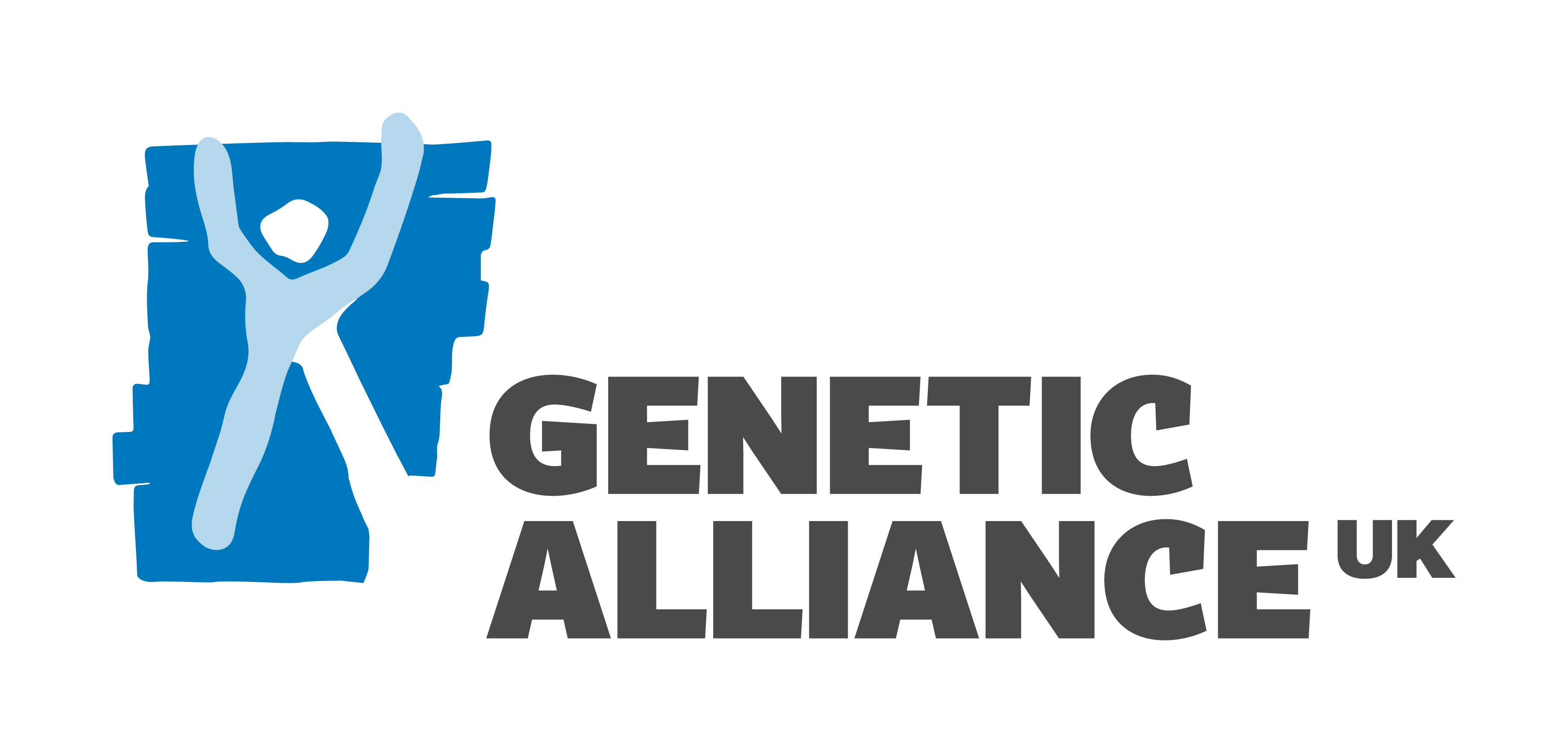
Skin Symptoms of Mast Cell Activation Syndrome
Helen Brown
The diagnostic consensus criteria for MCAS, posits that there must be clinical signs and symptoms, which stem from severe and recurrent mast cell activation within at least two different organ systems (Akin et al., 2010, Valent et al., 2012, Valent, 2013, Valent et al., 2019, Gulen et al., 2021, all cited in Valent et al., 2022). Skin, the largest organ of the body and part of the integumentary system, may be affected in MCAS (Salmon et al., 1994, cited in Mihele et al., 2023). There are a range of skin symptoms that may manifest, and these can be classified as diagnostic or non-diagnostic. Diagnostic skin symptoms include flushing, hives, pruritis and angioedema. Non diagnostic skin symptoms include dermographism, urticaria, rashes, alopecia, onychodystrophy, edema and poor healing (Gulen et al., 2021, Afrin et al., 2017, all cited in Mihele et al., 2023). Not all symptoms that present in the body are taken into account during MCAS diagnosis (Gulen et al., 2021, cited in Mihele et al., 2023). Valent et al. (2022b) note, initial clinical assessment of a patient with possible MCAS, involves a detailed case history and a thorough physical examination, including assessment of their skin (Valent et al., 2001, 2007, 2019, Hartmann et al., 2016, all cited in Valent et al., 2022b). It is important to note that some skin symptoms e.g. flushing, are not exclusive to mast cell disorders and are a symptom of other conditions also e.g. rosacea or endocrine disorders (Sadeghian et al. 2017, Welsh & Vera-Cabrera, 2014, Huguet & Grossman, 2017, all cited in Weiler et al., 2019).
When activated, mast cells release a range of mediators which have an inflammatory or vasoactive effect (Gonzalez-de-Olano & Alvarez-Twose, 2017). Several mediators have been implicated in the development of various skin symptoms. Mediator histamine, platelet activating factor (PAF), leukotrienes and prostanoids are implicated in the development of oedema, as they control vascular instability and endothelial cell barrier dysfunction. Release of mediator histamine can lead to pruritis and flushing symptoms, as it binds to four different receptors (H1-4). Release of histamine, kinins, leukotrienes and PAF mediator can lead to angioedema and pulmonary edema, as they may open endothelial gap junctions (Castells, 2006, Butterfield, 2022, Parente et al., 2023, all cited in Gulen, 2023).
In the past decade, several studies have been conducted, which provide data regarding skin symptoms and their frequency in MCAS. Afrin et al. (2018) characterised a large population of MCAS patients (413 patients, 298 examined retrospectively and 115 prospectively). A range of symptoms affecting different organ systems were recorded. Common skin symptoms (≥ 10% frequency) in patients included pruritis/urticaria (63%), migratory edema (56%), rash (49%), flushing (31%) and poor healing (23%). Common skin findings (≥ 10% frequency) during physical examinations included dermatographism (76%), edema to any degree (39%), rash of any type (34%) and flushing (12%). They note these numbers may be underestimations, as examinations of some patients were retrospective, where assessment and reporting may not have been as rigorous (Afrin et al., 2018).
Further data can be retrieved from studies of mast cell disorders. Mast cell disorders are conditions where aberrant mast cell proliferation or activation occur such as MCAS, mastocytosis and other related disorders. The Mastocytosis Society conducted a cross-sectional survey questionnaire online, collating a range of data including severity and frequency of 29 mast cell disorder symptoms, from 420 patients with mast cell disorder (Jennings et al., 2014). Amongst a plethora of symptoms 1 affecting different organ systems, focusing on skin symptoms, they found over two thirds of respondents reported flushing or itching of any severity (321 patients, 76.4% and 333 patients, 79.3 % respectively). Also, over half experienced these daily or occasionally at moderate or extreme severity. Other skin symptoms reported at any severity included urticaria pigmentosa rash/ telangiectasia macularis eruptive perstans eruptions (257 patients, 61.2%), Darier’s sign (216, 51.4%), dermatographism (222, 52.9%), other rashes (184, 43.8%) and angioedema (146, 34.8%) (Jennings et al., 2014). Jennings et al. (2014) note these results are a realistic representation of people that may seek medical help for possible mast cell disorder. Chen et al. (2018) collated case reports of 7 patients with systemic mast cell disorder. All five patients diagnosed with MCAS, presented with skin symptoms. Amongst a range of other symptoms affecting different organ systems, skin symptoms reported included urticaria, pruritis, angioedema of tongue and lips, periorbital edema and flushing. Chen et al. (2018) note this cohort highlights that there is great variability in the presentation of mast cell disorders.
Prevalence of skin symptoms may differ across variants of MCAS. There are three variants of MCAS: primary (clonal), secondary and idiopathic. Zaghmout et al. (2023) retrospectively examined 703 patients with suspected mast cell disorder. A comparative analysis between 31 idiopathic mast cell activation syndrome (iMCAS) patients and 13 clonal mast cell activation syndrome (cMCAS) patients, showed the prevalence of symptoms differed across the variants. During an episode, mucocutaneous symptoms were more common (in fact universal) in the iMCAS patients compared to cMCAS patients (100% vs 69%), with a statistically significant difference between the two variants (p .009). This pattern also emerged in non-MCAS episodes, but with no statistically significant difference between the variants. During an episode, urticaria and angioedema was the most prevalent skin symptoms in the iMCAS variant group and was significantly more prevalent in comparison to the cMCAS variant group (69% vs 23%, p .015). They note patients with mucocutaneous symptoms during anaphylaxis may rouse suspicions of iMCAS (Zaghmout et al., 2023).
MCAS can be a complication in patients with Ehlers-Danlos syndrome (EDS), a hereditary disorder affecting connective tissue (Xiao et al., 2023). Xiao et al. (2023) presented a case study of a 29-year-old female with EDS and MCAS, who experienced facial swelling, amongst other symptoms in reaction to polymer clips placed during surgery. An immunologist noted that the symptoms was strongly associated with the polymer clips, which triggered mast cells to start an immune response. Symptoms attenuated after the polymer clips were removed (Xiao et al., 2023).
In addition to providing data of the prevalence of skin complaints, Hader et al. (2023) found differing prevalence of skin complaints in different cluster groups and an association to a specific trigger. They conducted cluster and association analyses on a range of data from 250 MCAS patients, to find potential subgroups of MCAS patients. Characterisation of these subgroups could potentially help with diagnosis and enable personalised therapy. They note whilst neurological complaints were nearly universal, only smaller subgroups had dermatological complaints. Dermatological complaints reported, included itching (68.8%), flushing (68%), anal itching (53.6%), facial swelling (50.4%), urticaria (42.8%), acne-like changes (42.8%), nodes in skin (41.6%) and increase of telangiectasia (28%). Cluster analysis found patients could be placed into one of three clusters based on physical triggers e.g. heat, and each cluster differed in the prevalence of symptoms. Cluster 1 (reacted to all physical triggers) and cluster 2 (unreactive to cold), reported dermatological complaints significantly more often than cluster 3 (little response to physical triggers). For example, flushes were reported as follows: Cluster 1 (78%), cluster 2 (72%) and cluster 3 (54%) (p .001). Association analysis of symptoms and triggers revealed dermatological complaints were mostly associated with the trigger exercise. There was a significant relationship between flushing, itching, acne lesions and exercise (p 2 0.001, 0.001, 0.000, respectively). Skin complaints also tended to occur with respiratory complaints. Hader et al. (2023) note from this analysis, if a patient presents a specific complaint e.g. dermatological, the clinician could then potentially suggest the possible trigger and recommend steps personal to them to minimise it.
Skin symptoms may not always be present. Anaphylaxis guidelines recommend patients with anaphylaxis at emergency departments to be referred for a follow up appointment with an allergist. Campbell et al. (2014) carried out a retrospective health records review, assessing the outcomes of allergy/immunology follow-up appointments of 217 patients who met National Institute of Allergy and Infectious Disease-Food Allergy and Anaphylaxis Network (NIAID-FAAN) criteria. At follow-up, 3 patients received a diagnosis of MCAS. One of the MCAS patients did not have skin symptoms, but presented with wheezing, abdominal cramping and diarrhoea. Symptoms improved for all MCAS patients after treatment (Campbell et al., 2014). Studies conducted by the Spanish Network on Mastocytosis (REMA) found monoclonal MCAS patients did not have cutaneo-mucosal symptoms such as urticaria and angioedema during anaphylaxis. Instead, they presented typically with cardiovascular symptoms such as syncope and/or dizziness (Alvarez-Twose et al., 2010, cited in Gonzalez-de-Olano & Alvarez-Twose, 2017).
In conclusion, data suggest skin symptoms can be a part of the clinical presentation of MCAS and a diverse array of skin symptoms may manifest, with some being diagnostic. There are MCAS cases however with no skin symptoms present. The following data was obtained through a range of study designs and authors highlight several limitations in their studies. Further studies which are rigorous and well-designed, will help to ascertain an even clearer picture of skin symptomatology in MCAS.
References
Afrin, L. B., Self, S., Menk, J., Lazarchick, J. (2018) ‘Characterization of Mast Cell Activation Syndrome’, The American Journal of the Medical Sciences, Vol. 353, Issue 3, pp. 207-215 [online] Available at https://pmc.ncbi.nlm.nih.gov/articles/PMC5341697/ (Accessed 13 December 2024)
Akin, C., Siebenhaar, F., Wechsler, J. B., Youngblood, B. A., Maurer, M. (2024) ‘Detecting changes in Mast Cell Numbers Versus Activation in Human Disease: A Roadblock for Current Biomarkers?’, The Journal of Allergy and Clinical Immunology: In Practice, Vol.12, Issue 7, pp.1727-1737 [Online] Available at https://doi.org/10.1016/j.jaip.2024.03.010 (Accessed 21 December 2024)
Campbell, R. L., Park, M. A., Kueber, M. A., Lee, S., Hagan, J. B. (2014) ‘Outcomes of Allergy/Immunology Follow-Up After an Emergency Department Evaluation for Anaphylaxis’, The Journal of Allergy and Clinical Immunology: In Practice, Vol.3, Issue 1, pp.88-93 [Online] Available at DOI: 10.1016/j.jaip.2014.07.011 (Accessed 15 December 2024)
Castells, M., Gianetti, M. P., Hamilton, M. J. et al. (2024) ‘Mast cell activation syndrome: Current understanding and research needs’, Journal of Allergy and Clinical Immunology, Vol. 154, Issue 2, pp.255-263 [Online] Available at DOI: 10.1016/j.jaci.2024.05.025 (Accessed 17 December 2024)
Chen, M., Kim, A., Zuraw, B., Doherty, T. A., Christiansen, S. (2018) ‘Mast Cell Disorders: Protean manifestations and Treatment Responses’, Annals of Allergy, Asthma & Immunology, Vol.121, Issue 1, pp.128-130 [Online] Available at https://pmc.ncbi.nlm.nih.gov/articles/PMC6026564/ (Accessed 22 December 2024) 3
Fellinger, C., Hemmer, W., Wohrl, S., Sesztak-Greinecker, G., Jarisch, R., Wantke, F. (2014) ‘Clinical characteristics and risk profile of patients with elevated baseline serum tryptase’, Allergologia et Immunopathologia, Vol.42, Issue 6, pp.544-552 [Online] Available at https://doi.org/10.1016/j.aller.2014.05.002 (Accessed 15 December 2024)
Gonzalez-de-Olano, D., Alvarez-Twose, I. (2017) ‘Insights in Anaphylaxis and Clonal Mast Cell Disorders’, Frontiers in Immunology, Vol. 8 [Online] Available at DOI: 10.3389/fimmu.2017.00792 (Accessed 27 December 2024)
Gulen, T. (2023) ‘A Puzzling Mast Cell Trilogy: Anaphylaxis, MCAS, and Mastocytosis’, Diagnostics, Vol.13, Issue 21, p.3307 [Online] Available at https://doi.org/10.3390/diagnostics13213307 (Accessed 20 December 2024)
Hamilton, M. J., Hornick, J. L., Akin, C., Castells, M. C., Greenberger, N. J. (2011) ‘Mast cell activation syndrome: A newly recognised disorder with systemic clinical manifestations’, The Journal of Allergy and Clinical Immunology, Vol. 128, Issue 1, pp.147-152 [Online] Available at DOI: 10.1016/j.jaci.2011.04.037 (Accessed 13 December 2024)
Hader, T., Molderings, G. J., Klawonn, F., Conrad, R., Mucke, M., Sellin, J. (2023) ‘Cluster-Analytic Identification of Clinically Meaningful Subtypes in MCAS: The Relevance of Heat and Cold’, Digestive Disease and Sciences, Vol.68, Issue 8, pp.3400-3412 [Online] Available at https://doi.org/10.1007/s10620-023-07921-5 (Accessed 03 January 2025)
Jennings, S., Russel, N., Jennings, B., Castells, M., Valent, P., Akin, C. (2014) ‘The Mastocytosis Society Survey on Mast Cell Disorders: Patient Experiences and Perceptions’, The Journal of Allergy and Clinical Immunology: In Practice, Vol. 2, Issue 1, pp.70-76 [Online] Available at DOI: 10.1016/j.jaip.2013.09.004 (Accessed 21 December 2024)
Magro, C. M., Stephan, C., Kalomeris, T. (2024) ‘The utility of the normal thin section skin biopsy in the assessment of systemic/extracutaneous disease and small fibre neuropathy’, Clinics in Dermatology, Vol.42, Issue 6, pp.646-667 [Online] Available at https://doi.org/10.1016/j.clindermatol.2024.09.020 (Accessed 13 December 2024)
Mihele, D. M., Nistor, P. A., Bruma, G., Mitran, C. I., Mitran, M. I., Condrat, C. E., Tovaru, M., Tampa, M., Georgescu, S. R. (2023) ‘Mast Cell Activation Syndrome Update- A dermatological perspective’, Journal of Personalised Medicine, Vol. 13, Issue 7, p.1116 [Online] Available at https://doi.org/10.3390/jpm13071116 (Accessed 13 December 2024)
Valent, P., Akin, C., Bonadonna, P., Arock, M., Schwartz, L. B., Metcalfe, D. D. (2019) ‘Proposed Algorithm for Patients With Suspected Mast Cell Activation Syndrome’, The Journal of Allergy and Clinical Immunology, Vol. 7, Issue 4, p. 1125 [Online] Available at DOI: 10.1016/j.jaip.2019.01.006 (Accessed 21 December 2024)
Valent, P., Hartmann, K., Schwaab, J. Alvarez-Twose, I., Brockow, K., Bonadonna, P., Hermine, O., Niedoszytko, M., Carter, M. C., Hoermann, G., Sperr, W. R., Butterfield, J. H., Ustun, C., Zanotti, R., Radia, D. H., Castells, M., Triggiani, M., Schwartz, L. B., Orfao, A., George, T. I., Sotlar, K., Gotlib, J., Reiter, A., Horny, H-P., Arock, M., Akin, C., Metcalfe, D. D. (2022b) ‘Personalised Management Strategies in Mast Cell Disorders: ECNM-AIM User’s Guide for Daily Clinical Practice’, The Journal of Allergy & Clinical Immunology: In Practice, Vol.10, Issue 8, pp. 1999-2012 [Online] Available at https://doi.org/10.1016/j.jaip.2022.03.007 (Accessed 06 January 2025) 4
Valent, P., Hartmann, K., Bonadonna, P. et al. (2022) ‘Global Classification of Mast Cell Activation Disorders: An ICD-10-CM-Adjusted Proposal of the ECNM-AIM Consortium’, The Journal of Allergy and Clinical Immunology: In Practice’, Vol.10, Issue 8, pp.1941-1950 [Online] Available at https://doi.org/10.1016/j.jaip.2022.05.007 (Accessed 17 December 2024)
Weiler, C. R., Austen, K. F., Akin, C., Barkoff, M. S., Bernstein, J. A., Bonadonna, P., Butterfield, J. H., Carter, M., Fox, C. C., Maitland, A., Pongdee, T., Mustafa, S. S., Ravi, A., Tobin, M. C., Vliagoftis, H., Schwartz, L. B. (2019) ‘AAAAI Mast Cell Disorders Committee Work Group Report: Mast cell activation syndrome (MCAS) diagnosis and management’, Journal of Allergy and Clinical Immunology, Vol.144, Issue 4, pp.883-896 [Online] Available at https://doi.org/10.1016/j.jaci.2019.08.023 (Accessed 06 January 2025)
Xiao, Y., Calixte, D. A., Fry, E., Tiesenga, F. (2023) ‘Removal Of Polymer Clips From The Gallbladder Fossa In A Patient With Ehlers-Danlos Syndrome (EDS) To Treat Mast Cell Activation Syndrome (MCAS): Case Report’, Cureus Journal of Medical Science, Vol.15, Issue 1[Online] Available at DOI: 10.7759/cureus.33704 (Accessed 26 December 2024)
Zaghmout, T., Maclachlan, L., Bedi, N., Gulen, T. (2023) ‘Low Prevalence of Idiopathic Mast Cell Activation Syndrome Among 703 Patients with Suspected Mast Cell Disorders’, The Journal of Allergy and Clinical Immunology: In practice, Vol.12, Issue 3, pp.753-761 [Online] Available at https://doi.org/10.1016/j.jaip.2023.11.041 (Accessed 15 December 2024)
Become a friend
Sign up to become a Friend of Mast Cell Action so we can keep you up to date on our progress and on how to get involved in our latest campaigns and initiatives.
Donate
Mast Cell Action relies entirely on the generosity of people like you. Please make a donation now and together we can make a difference to those affected by MCAS.







